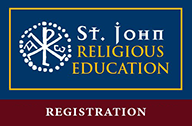Bulletins
March 6, 2016
Download the Bulletin as a PDFHis Eminence Robert Cardinal Sarah, the Cardinal Prefect of Congregation for Divine Worship and Sacraments whose speech in New York City last summer I mentioned to you last October, published in June of 2015 an article entitled “Silent Action of the Heart” in the Vatican’s official newspaper l’Osservatore Romano. He takes up themes that we have been considering in these pages over the last few months, namely, the development of the Liturgy, the active participation of the faithful and the proper action of the priest offering Holy Mass. He writes:
Fifty years after its promulgation by Pope Paul VI, will the Second Vatican Council’s Constitution on the Sacred Liturgy finally be read? Sacrosanctum Concilium is not in fact a simple catalogue of “recipes” for reform, but a true and proper Magna Carta for all liturgical action. In that Constitution, the Ecumenical Council gives us a masterful lesson in methodology. Far from contenting itself with a disciplinary and external approach to the liturgy, the Council summons us to contemplate the liturgy in its essence. The Church’s practice always flows from what she receives and contemplates from Revelation. Pastoral practice cannot be divorced from doctrine.
In the Church, “action is directed to contemplation” (cf. §2). The conciliar Constitution invites us to rediscover the Trinitarian origin of the work of the liturgy. Indeed, the Council affirms continuity between the mission of Christ the Redeemer and the liturgical mission of the Church. “Just as Christ was sent by the Father, so also he sent the apostles,” so that “by means of sacrifice and sacraments, around which the entire liturgical life revolves” they might “accomplish the work of salvation” (§6).
The liturgy in action is thus none other than the work of Christ in action. The liturgy is in its essence actio Christi: “the work of Christ the Lord in redeeming mankind and giving perfect glory to God” (§5). He is the high priest, the true subject, the true protagonist of the liturgy (cf. §7). If this vital principle is not embraced in faith, one risks reducing the liturgy to a human action, to the community’s celebration of itself. On the contrary, the true work of the Church consists in entering into the action of Christ, participating intimately in the mission he has received from the Father. Thus “the fullness of divine worship was given to us,” because “his humanity, united with the person of the Word, was the instrument of our salvation” (§5). The Church, the Body of Christ, must in turn become an instrument in the hands of the Word.
To be continued...
God bless you!
Rev. Christopher J. Pollard



